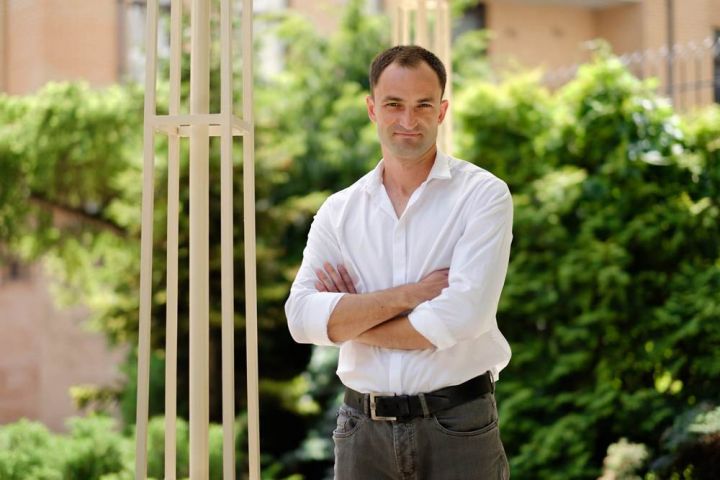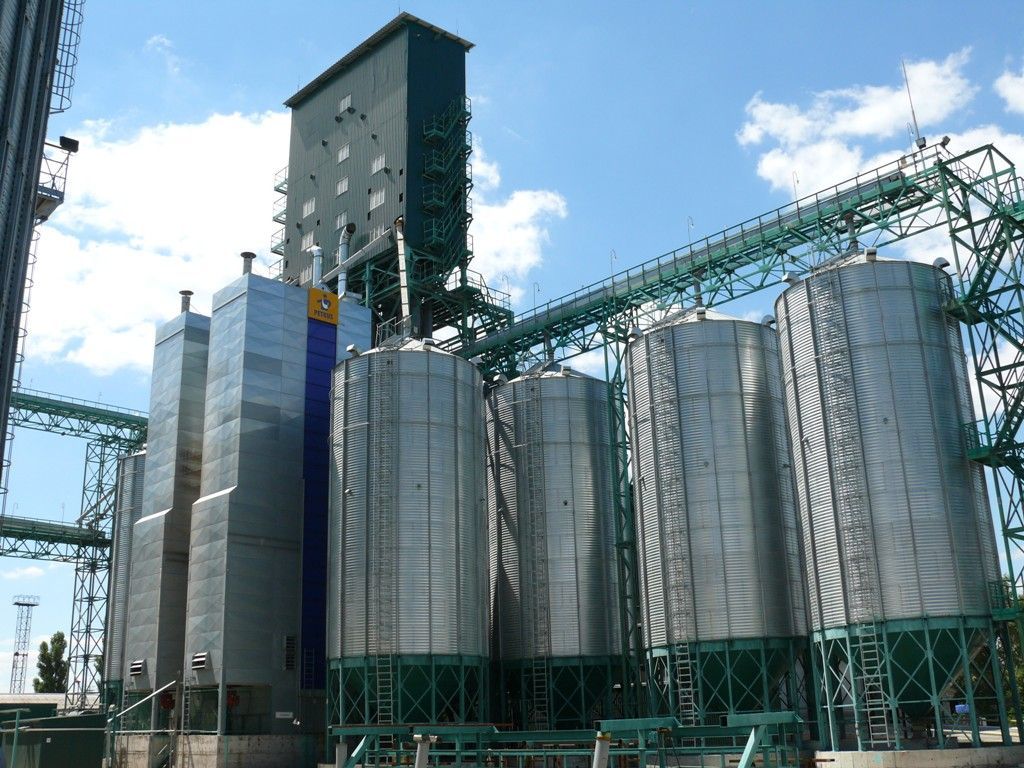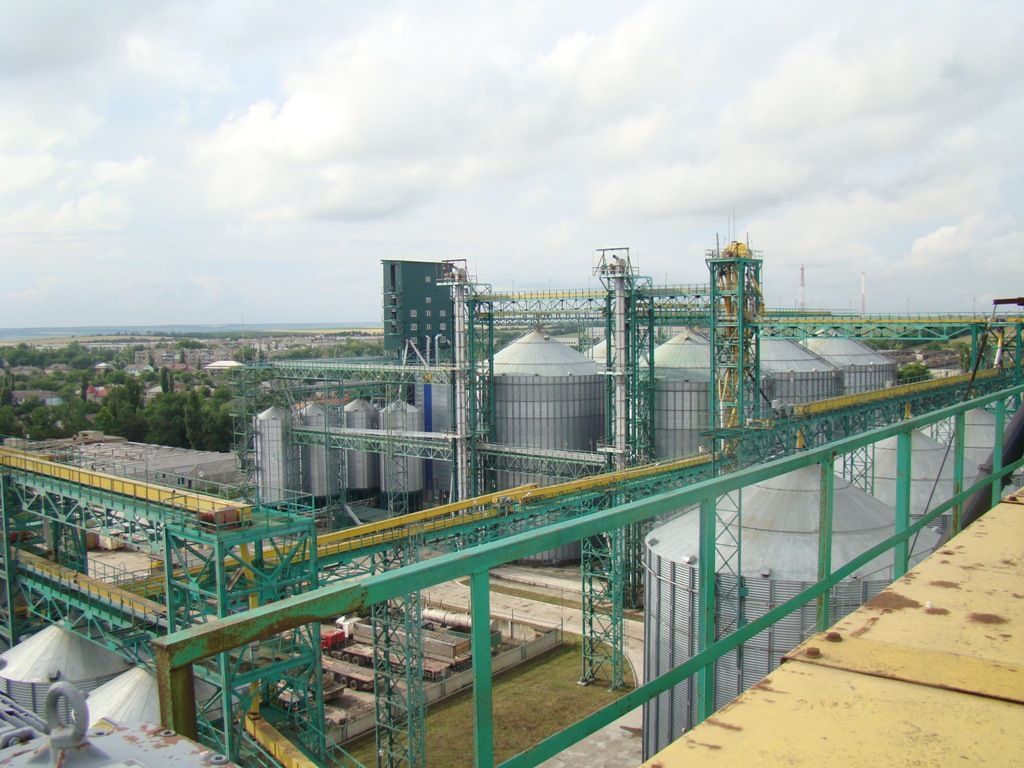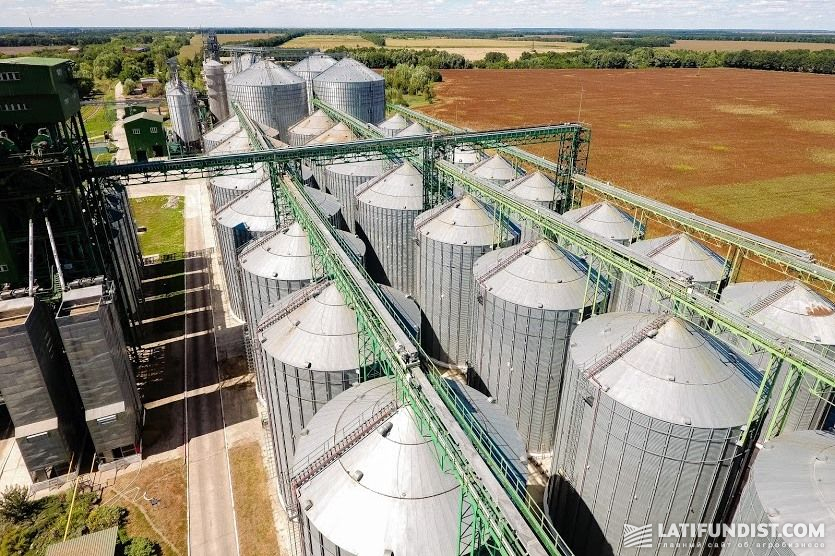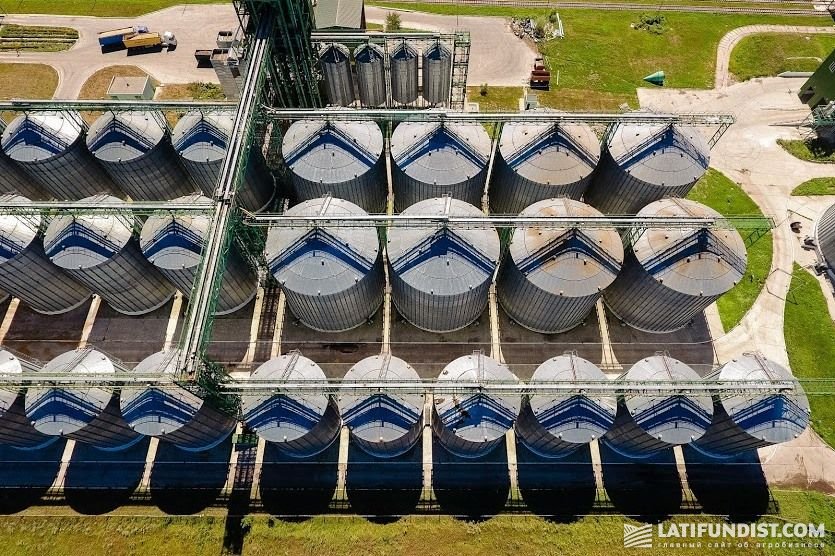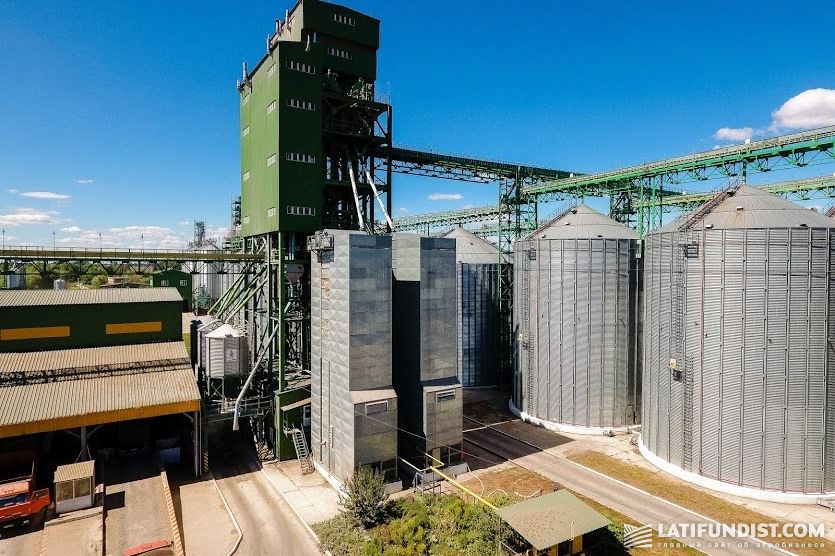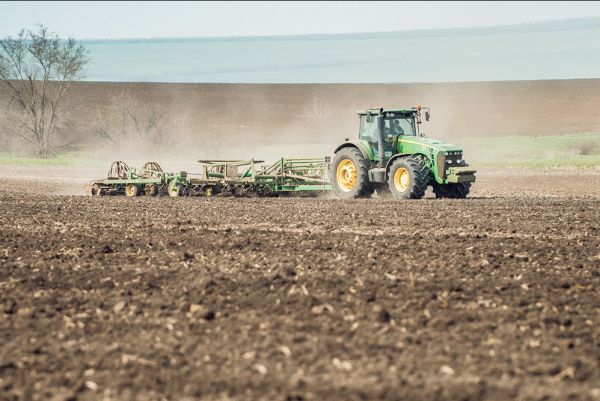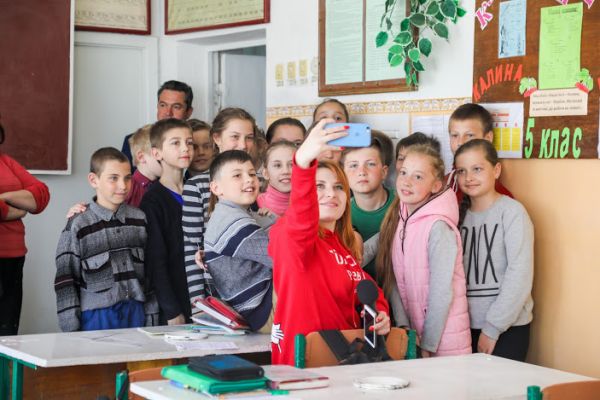To learn more about agribusiness in Ukraine, follow us on Facebook, on our channel in Telegram, and subscribe to our newsletter.
Vitaliy Shtempel: A CFO Affords No Seasonality in His Work
Vitaliy Shtempel joined Agrain in 2010. Since then, he has worked his way up from economist to the director of economics and finance. Simultaneously, he studied at the University of Florida. According to him, it was this education that helped him to understand how agribusiness works. Vitaliy possesses all the qualities of a business manager: he knows how to plan his work, he is well educated, proactive and open to everything new. Largely thanks to his ideas, new projects are born in the company. One such is the idea to equip the roofs of pig farms with solar panels and install biogas plants on their territory. In an interview with Latifundist.com, he speaks about how the livestock industry has become a profitable one, why the company does not plan to buy grain hopper cars, and why it sees nothing wrong in farmland market liberalization.
Latifundist.com: Vitaliy, will you tell about your professional experience? What position do you hold at Agrain and what career path preceded it?
Vitaliy Shtempel: I have experience in the chemical, energy and mining industries. I was involved in business planning, strategic planning and investment appraisal. The primary goal was to increase the profitability of factories and enterprises. In 2010, I started working in the agricultural sector. At that time, the Agrain Group was developing at full speed: the land bank was being expanded, pork complexes and elevators were being constructed. At first, I worked as an economist, and later I headed the Economics Department. This year I was appointed Director of Economics and Finance.
Latifundist.com: Speaking of your responsibilities in the company, do you have a kind of a dashboard — a document with statistics, reports, allowing you to see what is happening in the company on procurement, transport movement? Or is it not necessary?
Vitaliy Shtempel: Surely, I use operational reports in my work. In particular, every morning I get a brief of the crop progress, the works done during the previous day. I see a picture of the work plans, the remains in the fertilizer and fuel storages. I have a financial plan, a report on the balance of funds on the account and their receipt, sales plans, a list of contracts for the domestic market and export. So I can say that I have a kind of a dashboard. In the future, when document flow automation will be introduced, there will be an electronic dashboard with indicators changing on-line.
Latifundist.com: The company's key business directions are livestock farming, crop production and logistics. Which of these is the most profitable from the economic point of view?
Vitaliy Shtempel: Our most important area of focus is crop production. It is the most marginal and brings the most profit. Before, animal husbandry, which was inherited with the land bank, was less profitable. We built a modern pork complex, expanded cattle farms, changed the technology of herd keeping. As a result, the milk yield and weight gain increased. We began supplying meat to foreign markets, and so the industry which was unprofitable at the start began to bring profit.
The company's elevators are increasing their turnover as well. Originally, they were built for the company's grain only, yet today about 60-70% of the grain is supplied by third parties. Agrain's facilities are considered to be the largest in their localities. Elevator complexes are equipped with foreign equipment and high-capacity reception hubs. Modern technologies are used in the operation of the elevators, which allow reducing gas consumption per ton (tpct) of drying.
The logistics business is also well-developed. We have Agrain Trans and Agrain Trading logistics companies. Agrain Trans was created to optimize internal logistics. We tried to minimize the use of third-party vehicles because it is always easier to manage our own transport. The turnover is higher, so the costs are lower allowing us to maintain high harvesting rates. Today, the company owns 65 modern grain trucks. More than 60% of our operations are performed for third party contractors. The company plans to expand its fleet up to 100 units, as this business direction is profitable.
Latifundist.com: Is seasonality present in your work in the economics department or is it closely related to the production cycle?
Vitaliy Shtempel: There's no seasonality in a CFO's work. He works year-round on developing new projects, concluding contracts, working with banks and investments. For example, we make a starting business plan for the whole year, it is constantly being changed, then there comes a version control. At the end of the year, we analyze the cropping plan, actual costs, reassessment of plans for tilled crops, we update prices for grain, PPPs, fuel, etc. Then we present a new business plan. In spring, we actualize it when we carry out actual works. Already today, we see a slight saving on fuel due to the reduction of oil prices and strengthening of the hryvnia exchange rate. We also expect nitrogen fertilizers to become cheaper in connection with the fall in natural gas prices.
Latifundist.com: Word is that a large number of accountants is the scourge of the agricultural sector. Are accounting automation systems being implemented in Agrain?
Vitaliy Shtempel: When I first started in agriculture, the weirdest thing for me was that accountants had large stacks of documents that took a couple of months to process. How does this affect the economics department? We do not have up-to-date information. Until the June reports are done, I see only the May situation which is already irrelevant. Therefore, all these years, I have been studying how to automate accounting and I think we will soon move from paper to electronic workflow. Previously, the primary documents were filled in by several people, then this paper went from the branch to the central office of the cluster right to the accounting department. We plan to move forward. All the data in this document including the volume of work, fuel write-off and payroll will be stored in an electronic form. We also plan to use an electronic digital signature. Thus, we will optimize not only the document flow but also accounting.
Latifundist.com: Is there no opposition from employees?
Vitaliy Shtempel: Accountants are used to having the actual document. They are accustomed to wet stamp, so they are not emotionally ready to part with it yet, although electronic workflow facilitates their job. Today it is possible to adjust it so that documents will come promptly in electronic form. The same applies to tax audits. There is an electronic digital signature accredited by the Ministry of Justice. If the tax service suddenly needs a printed document, we will be able to provide it. There is no problem, and I do not see any risks here. By the way, the company has already implemented the program "1C: Enterprise 8.3" and the Cropio system helping us to put these plans into practice.
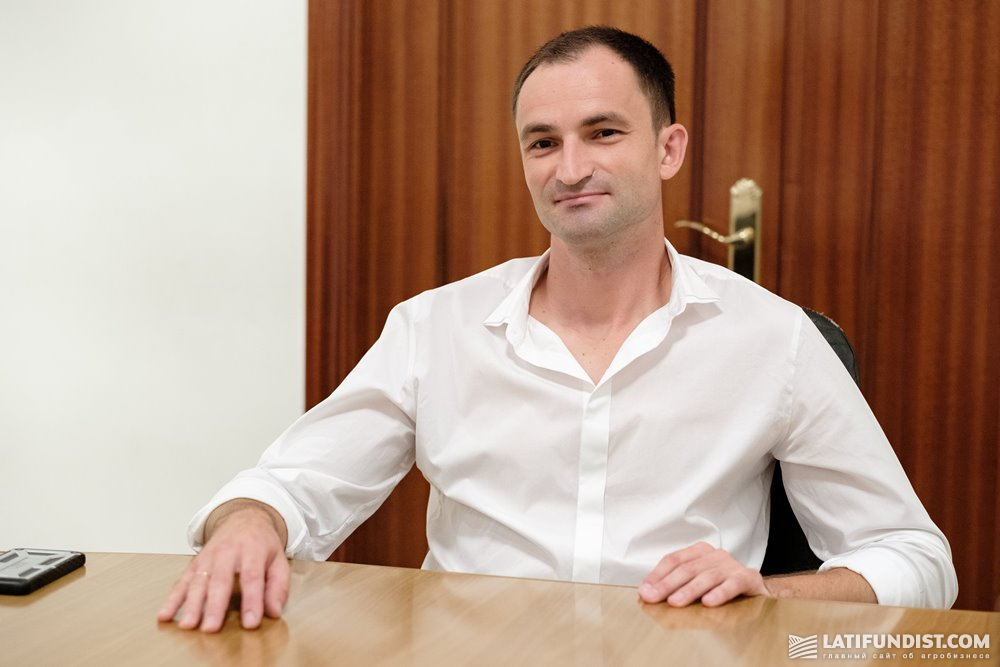
Latifundist.com: Is the Cropio system running in test mode?
Vitaliy Shtempel: We switched from test mode to industrial in just a couple of weeks. We use all the telematics-related options and even uploaded the information that had been accumulated in the operational reports of previous years. The advantage of the system is that it provides for the assessment of yields at each farm. With this information, we can plan ahead for grain sales and forward contracts. With Cropio, you can track the time the harvesting takes and then properly plan the usage of combines and grain trucks. We also use it as a communication instrument for our employees. Through the system, we can see whether the agronomists actually went to the field, what analyses were conducted and their results. It is impossible, for example, to take a picture of a beautiful adjacent field and say that it is the state of our crops. Any photograph in Cropio is attached to a geo-point and you can see where it was taken, at the edge or in the middle of the field. This is no less important as one may show the edge of the field sound, and in the middle, there may be diseases and so on. Sometimes bad news is more useful than the good news. We have almost selected the tablets for agronomists. They will go in the fields and fill their observations in the Cropio system. By the end of the year, we will try the function of "mobile agronomist" more specifically at several enterprises.
Latifundist.com: Do you plan to digitalize the land bank?
Vitaliy Shtempel: This year, all the company's farmland has been digitalized. The Cropio system also provides for data integration. As a result, we can visualize the state of the land bank and lease agreements. That is, we already see where there will be more work this year to renegotiate contracts, and where less.
Latifundist.com: Is investment strategy included in your responsibilities? The market is now actively discussing an investment in rail cars. Does the company see it as a profitable investment or relies more on motor vehicles?
Vitaliy Shtempel: We did consider the matter, but then we gave it up. I will explain why. The main problem of railway transportation is the lack of traction force — diesel locomotives. Purchase of rail cars will not facilitate logistics. Another thing is the payback which is not fast. The rail cars turnover will be affected by the condition of the railway track, derailment, and the location of the cars off-season. In addition, the forwarding service will have to be paid for, as well as freight transportation services by rail. Therefore, I believe that this is a separate business, and it is not ours yet.
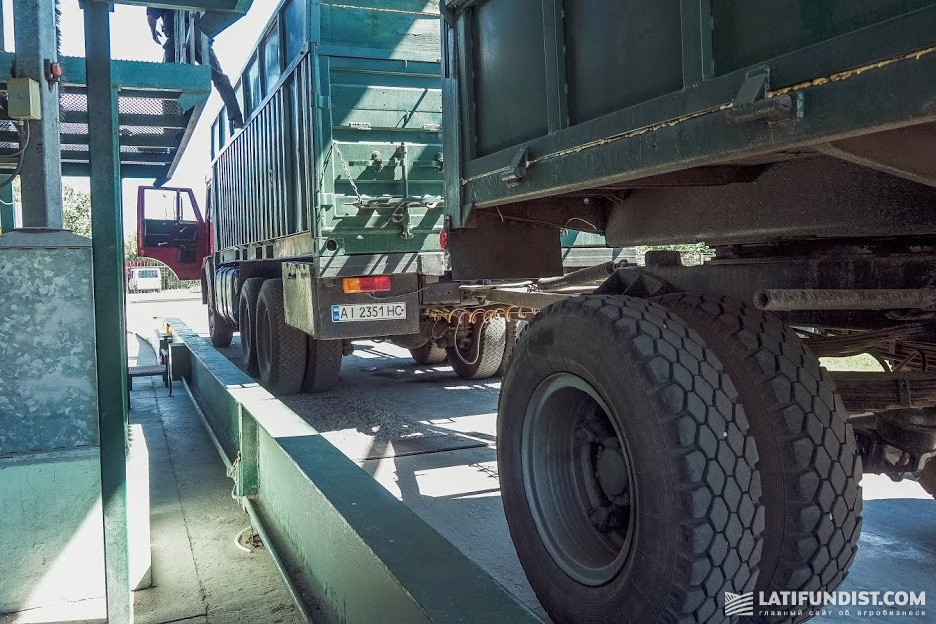
Latifundist.com: How has the road transport economics changed? It was once thought that 250 km was the maximum the motor vehicles could do. Nowadays, the cargo is delivered much further.
Vitaliy Shtempel: Yes, it is. If we look at the map and start from the main ports, we will see that the radius of transportation used to be about 150-200 km. Today it has increased significantly. For example, the radius of our transportation can reach 300 km. At the same time, we are considering longer routes, where no company's elevators are located, but there are farmland and grain. Take, for example, Zhytomyr region. The cost of treatment and shipment of grain at third-party elevators is too high, so we transport grain by our own vehicles to our elevators. As a result, we get approximately the same expenditures with no additional costs. I would like to note that road transport economics is growing with each year. It is supported by well-organized work, rise of railway transportation cost, reduction of oil price and, as a consequence, of fuel.
Latifundist.com: Agrain Agrogroup owns Service Grain and Elevator Agro grain elevators. Will you tell about their turnover?
Vitaliy Shtempel: One of the elevators, Elevator Agro, is considered the largest in Chernihiv region. Its capacity is 180-190 thou. t. It is difficult to reach two turnovers, but we try to do it. The grain volume at the elevator in Odesa region is much lower. Not much corn is produced there. Sunflower, wheat and rapeseed are the key crops. At the same time, wheat varies in grade and unit, so more containers and silos are needed. Many turnovers on this elevator are difficult to do. So far, we are aimed at 1.5-2 turns. We also have two mini silo type elevators in Cherkasy region. They are designed for fast turnover. The capacity is 5 thou. t with a potential increase up to 20 thou. t. At this facility, we do 10-12 turnovers.
Latifundist.com: What is the major income source of the elevators in the northern region? Is it storage or drying service?
Vitaliy Shtempel: No one makes money on storage in this region. The major income for the elevators is provided by drying service since the grain here is moister. Storage taken separately has always been neither justified nor has it paid off. The amount of investment in the construction of silos is unreasonably high compared to the cost of storage services. Therefore, they were built in order to provide maximum grain turnover just for the sake of drying service. Income truly is significant. Besides, every year we expand the use of polymeric hoses. This year, we plan to get a record corn harvest in this region and therefore we are set to increase this very type of storage.

Latifundist.com: Do you have a formula for commodity trading?
Vitaliy Shtempel: Agriproducers try to minimize risks. One hundred percent of forwards cannot be contracted, as we do not know what the yield will be. We sell in equal shares about 30% of the harvest by forward throughout the year. The rest is the spot and deferred market when we keep the grain until a more favourable price appears.
Latifundist.com: In your opinion, which crops have the highest production costs?
Vitaliy Shtempel: These are corn, rapeseed and soybeans. In addition to these crops, our company also produces wheat and sunflower. All of them, with the exception of wheat, are highly profitable and we get the main income from their sale. This year's soybean is less profitable due to the fall in price, but before that it had a good margin. The elevators started to receive rapeseed, but the oil content is lower this season. The lowest indicator for some enterprises is 39%. This factor will affect the final price. Those multinational companies that buy rapeseed from us, make a discount in the price for the actual oil content, the basis of which is 42%.
We need wheat to maintain the appropriate crop rotation, especially in the southern regions with unfavourable conditions for soybean production and it is impossible to get a high corn yield. Moreover, there is good logistics to the ports, which adds to its marginality. We pay with wheat to our shareholders, and our livestock farms cannot do without it.
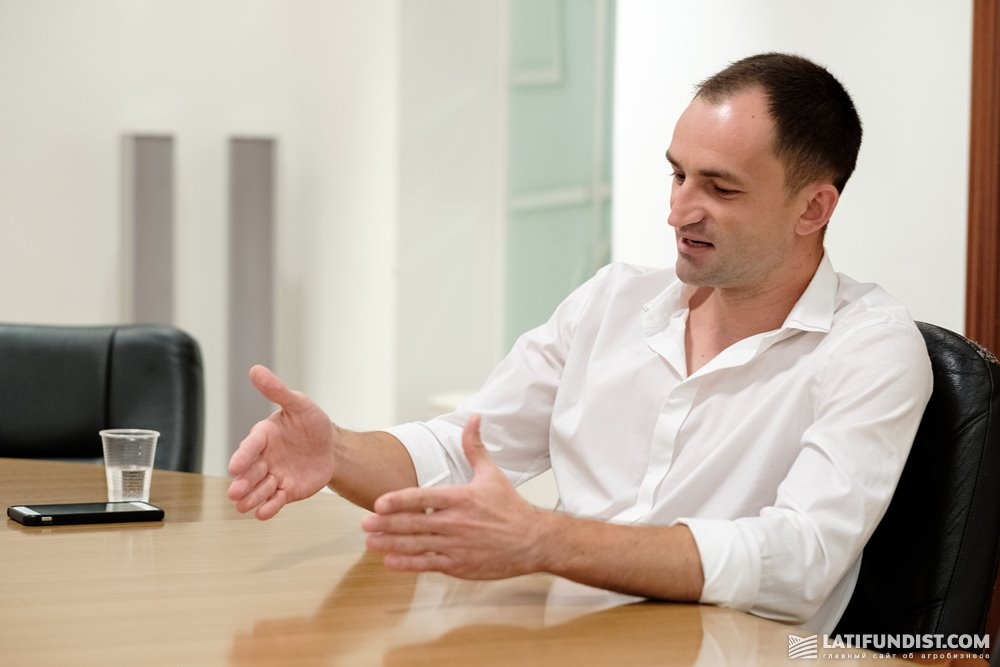
Latifundist.com: Do you plan on investing in other industries?
Vitaliy Shtempel: The list of projects we are considering is rather long. We have a project to install solar panels on the roofs of pig-breeding complexes. When we implement it, we will operate at a green tariff. There is also a project to produce biogas at pig farms. Today, we already produce and use it for our own needs, for example, for heating the facilities. However, there is a surplus and we need to do something about it. Let's say, monetize it. Since pig farms are located in villages, it will not be possible to heat water and supply it to public utilities. Electricity production and selling it is one of the options. But such projects are still under consideration with the view of their payback period.
Latifundist.com: Do you cooperate with in-state banks only or consider entering international capital markets?
Vitaliy Shtempel: We are working on ways to reduce the cost of our loan portfolio and plan to enter foreign markets in the future. Although I would like to add that Ukrainian banks are ready to offer attractive terms of cooperation, for example, in the field of machinery purchases. Banks are teaming up with manufacturing plants and their dealers to develop special programs for agrarians. This makes the bank's rate and terms of purchase more acceptable.
Latifundist.com: Perhaps you are going to invest more in machinery this year.
Vitaliy Shtempel: Yes, we are. Every year we actively renew our fleet of machinery and equipment to meet the new requirements. We also review good deals offered by leasing companies and manufacturers.
Latifundist.com: Does the company have its own harvesters or rent them?
Vitaliy Shtempel: These days, outsourcing makes harvesting easy. We do not see an urgent need to buy our own harvesters. Although we have them. Let me put it this way: we do half of the fieldwork using our machinery and a half using rented one.
Latifundist.com: Farmland market is much disputed over today. What are your expectations and concerns?
Vitaliy Shtempel: I believe the land will be rented for a long time. We need to continue working with shareholders and enter into long-term lease agreements. There are doubts that a considerable share of farmland will be put into real turnover once the land market is open. We can speak about 3-5% of all lands that will be in circulation, bought and sold. People for whom it is not relevant will be the first to sell their land. These are young people from the city who inherited it from their parents or relatives living in the village. The rest of the owners will spend years watching the price formation and how it will be set at the legislative level. As for the common fears of the market regarding the possibility that foreign companies and agricultural holdings will buy all the land, this requires cheap loans. Today, buying farmland requires foreign loans with a lower interest rate. At the same time, the land will become a firm pledge for the bank and they will not be able to assess it cheaply.
Latifundist.com: What do you think will be the result of the land market opening?
Vitaliy Shtempel: I don't see anything wrong with opening the land market and I think that this is the property of the villagers, and they should be free to dispose of it. A moratorium is an abnormal practice, when the owner is forbidden to sell his property. Opening of the land market will allow companies, I mean not only agricultural holdings, but all those involved in this business, to invest more in farmland. For example, the southern region is a zone of risky agriculture because of the droughts occurring with a certain cyclicality. Today, none will invest in the irrigation system on the leased land. With the purchase of these lands, the situation will change dramatically. Investments in irrigation will come in, productivity will increase, and new crops will be produced there. In Kherson region, the farms implementing irrigation systems have the highest yield on soybean in Ukraine. Soybean is not grown at all where no irrigation is possible. In the south, we can successfully grow corn if it is irrigated. By and large, the opening of the land market will allow the producer to invest more in the land and get high margins. For the villagers it is also an increase in living standards due to the high grain yield in the region.
Latifundist.com: You have been working in the agricultural sector for about 10 years. How has the industry evolved during this time?
Vitaliy Shtempel: Before, agriculture was seen as an underdeveloped sector, and people working in it were considered unqualified. I am sure that this is a more complex business than industry, the specialists have more skills and are more professional. Today, the agricultural sector is probably the most innovative in Ukraine due to its integration with the IT sector. This cooperation creates new products and technologies that make agriculture more efficient and productive.
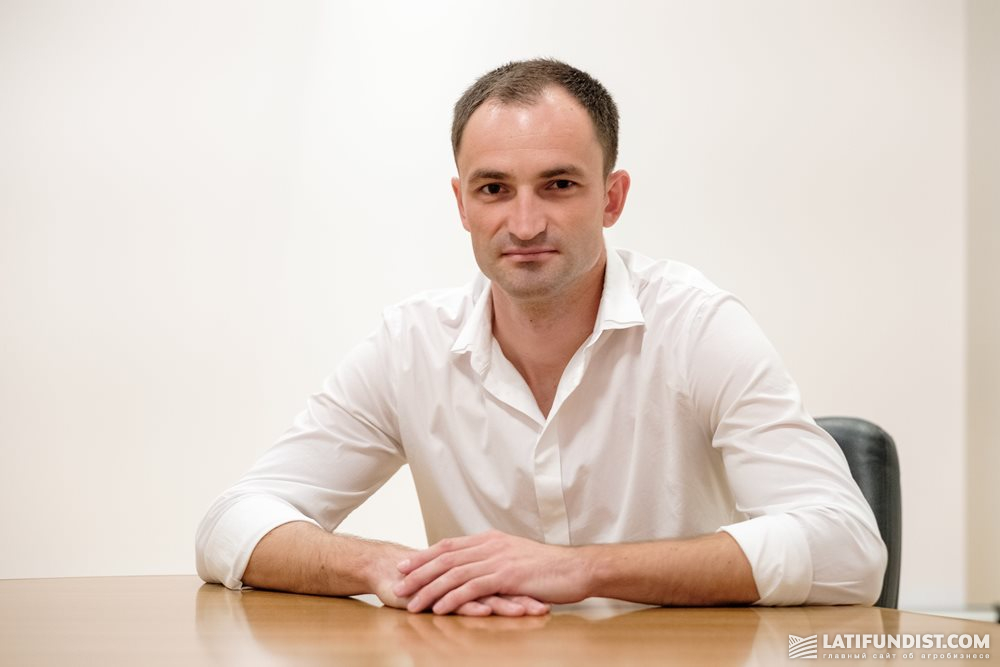
Latifundist.com: You completed courses at the University of Florida. How is a specialized education in the United States different?
Vitaliy Shtempel: I was a remote student at the University of Florida. Honestly, distance education provided by the US and European universities is very rewarding. One gets a minimum of theory and a lot of practice. It was this training back then that helped me to understand how agribusiness works. I believe that training is a continuous process. One shouldn't stop learning with graduating from the university and working in the same profession all his life. This epoch is already gone. Those young people who are graduating from universities today should understand that in 10-15 years they will have to be retrained for something else. And, most likely, this period will be shifted.
Latifundist.com: The Agrain company team won the First Winter Agrarian Business Modeling Championship held by FarmForesight. What was the victory provided by?
Vitaliy Shtempel: Our victory was inevitable, and we kept the championship throughout the tournament, winning both the main set and the playoffs. The team consisted of young guys who do not need to be additionally motivated. They value the team result. We plan to use this experience in real life. The only difference between the game and real business is time. If time flew very quickly on a simulator, in real life success does not come lightning fast. It's a long process implying a path to walk through. You'll see, in some time, our company will be among the leaders.
Latifundist.com: How close are all the game cycles to the actual agribusiness?
Vitaliy Shtempel: You know, they are pretty close. When we were training and playing on the simulator, we were surprised so many subtleties and nuances are taken into account in this program. That's why I strongly recommend that it be used to evaluate employees: how effectively they make decisions, what indicators they are guided by. I also liked the fact that the simulator was not focused on EBITDA per hectare. As a financier, I am more interested in the return on investment and working capital. These indicators are more significant. When I saw that FarmForesight focused on them, I thought that the guys who had developed the game knew what they were doing.
Latifundist.com: Thank you for the interesting conversation!
Konstantin Tkachenko, Natalia Rodak, Latifundist.com

